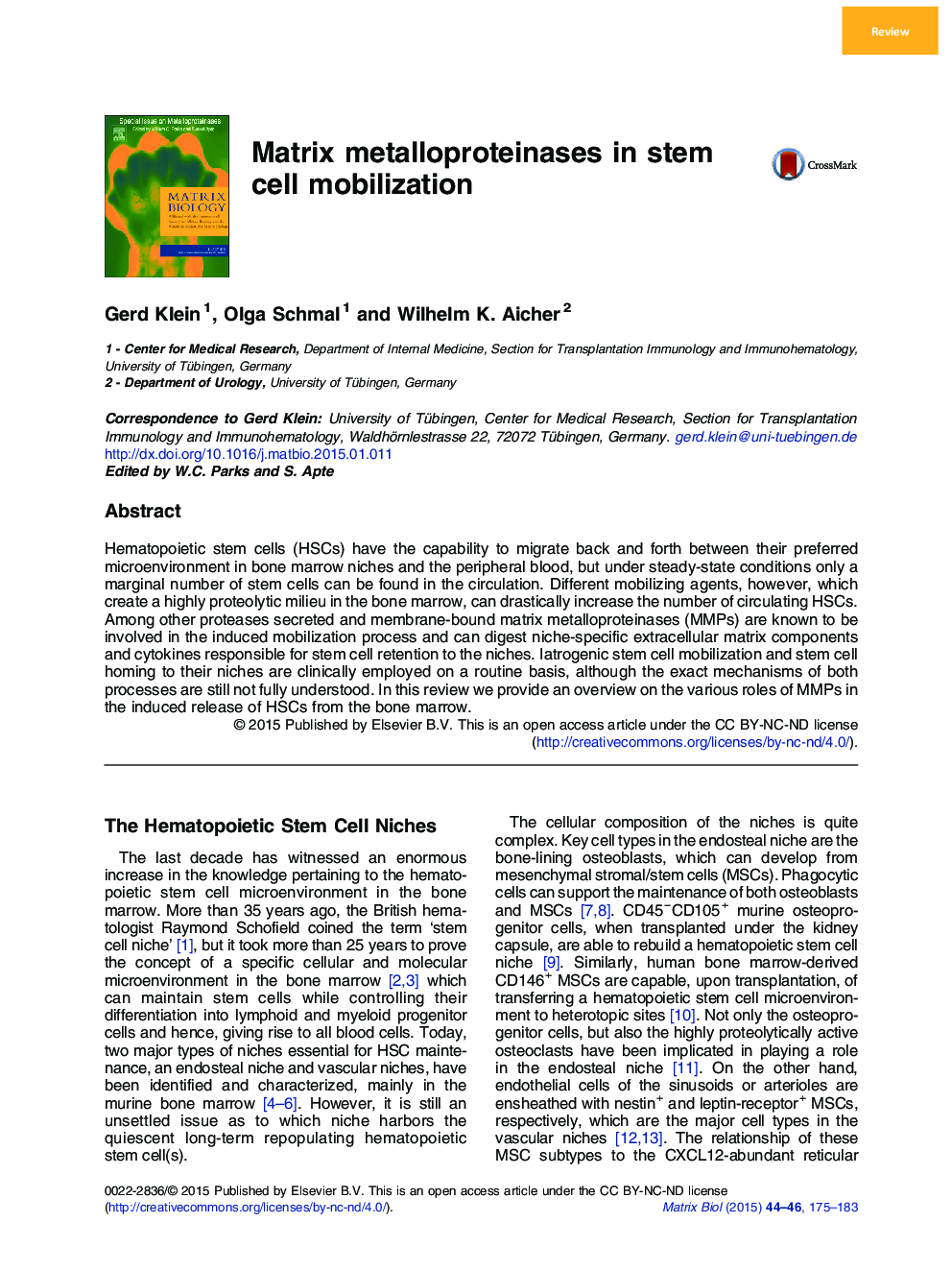| Article ID | Journal | Published Year | Pages | File Type |
|---|---|---|---|---|
| 2144724 | Matrix Biology | 2015 | 9 Pages |
•HSC mobilization from bone marrow niches requires the activity of different MMPs.•Secreted MMP-2, -8 and -9 and MT1-MMP are part of an induced proteolytic milieu.•MMPs inactivate HSC-regulating factors and cytokines and digest niche receptors.•An adequate MMP/inhibitor balance is essential for mobilization and homing of HSCs.
Hematopoietic stem cells (HSCs) have the capability to migrate back and forth between their preferred microenvironment in bone marrow niches and the peripheral blood, but under steady-state conditions only a marginal number of stem cells can be found in the circulation. Different mobilizing agents, however, which create a highly proteolytic milieu in the bone marrow, can drastically increase the number of circulating HSCs. Among other proteases secreted and membrane-bound matrix metalloproteinases (MMPs) are known to be involved in the induced mobilization process and can digest niche-specific extracellular matrix components and cytokines responsible for stem cell retention to the niches. Iatrogenic stem cell mobilization and stem cell homing to their niches are clinically employed on a routine basis, although the exact mechanisms of both processes are still not fully understood. In this review we provide an overview on the various roles of MMPs in the induced release of HSCs from the bone marrow.
